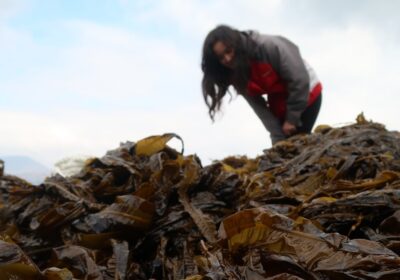Imagine you are having a drink with a friend, you are both drinking some alcoholic beverage, there is a plastic menu stand on the table and you get a whiff of perfume from the person walking by. Did you know that nowadays all these products – the alcohol, plastic, and perfume – can be made by using the same type of organism?
You all probably know that the microorganism yeast is used in the production of alcohol and bread for millenniums. However, until the invention of the microscope, we had no clue how the alcohol in beer was made or how bread rises when you leave it stand in a warm place with a damp towel. After the invention of the microscope the age of microbiology began. Scientists were able to discover that a tiny organism (microorganism) called yeast is present in beer and wine, they also discovered the presence of a bacterium in yogurt. Later scientists discovered that these microorganisms converted the sugars of the grain or milk into either alcohol or lactic acid (which gives the yoghurt a more acidic taste compared to milk) – this was the start of the age of biotechnology. The use of biotechnology has given us some wonderful products in the past, for example the antibiotic penicillin discovered by Alexander Flemming is made by a mould. This mould is a microorganism which grows in long treads of cells which makes it visible to the naked eye. Scientists were able to mass-produce the antibiotic penicillin in a big reactor by growing the mould under stressful conditions. The discovery of the structure of DNA opened even more doors in the world of biotechnology, because now the genetic material of one organism could be placed into another organism. This enabled scientists to produce a whole new array of products which was previously impossible.
How is it possible to produce plastic and perfume with microorganism?
Now you are probably wondering how it is possible to produce plastic and perfume with microorganism. Firstly, the smell of perfume comes from very complicated molecules called aromatics. These aromatics are produced in nature, for example the smell of a rose comes from these aromatic molecules. Scientists are now able to place the production route of the rose aromatic into a microorganism. Then they feed the altered microorganism some sugar and it is able to produce a nice odour which just smells like roses.
Plastic on the other hand is produced in a slightly different way. Plastic is made of a chain of molecules fused together which is called a polymer. Microorganism are not able to make such long polymers needed for plastic; therefore the microorganism first makes the single molecule in bulk and then those molecules are chemically converted to chains. A microorganism used for the production of those single molecules is almost the same bacterium found in your yoghurt. This bacterium is altered by scientists in such a way that it produces lactic acid from sugars very efficiently. Afterwards the lactic acid is converted into polymers which are in turn made into plastic.
My thoughts on how we can use biotechnology to make a bright and sustainable future.
I can put this in one sentence, the replacement of petrochemical production processes with circular biotechnological processes will achieve this goal. However, this is easier said than done. In theory we can use any resource which contains some form of sugar to produce any product we need. This means that we can even use biological waste streams, which are not efficiently utilised at the moment, because the microorganism can convert the sugar trapped in the waste into a useful product. This involves a very big challenge, as you might have noted. We have a lot of work to do, if we look at the utilisation of biological waste for example and we want to design a circular production process. In this case, we first need to determine the product we want to produce, then we need a cascade of bioreactors with different types of microorganisms, which can be engineered, to produce the product and last, we have to design a sustainable energy supply. We should not forget that the waste stream of our product should end up in our production process. Therefore, I see a need for more interdisciplinary research and development teams which can design these types of processes. Together we can make our future bright and sustainable!
Title image credit: University of Basel/SNI/Nano Imaging Lab | https://phys.org/news/2017-09-protein-life-yeast-cells.html




